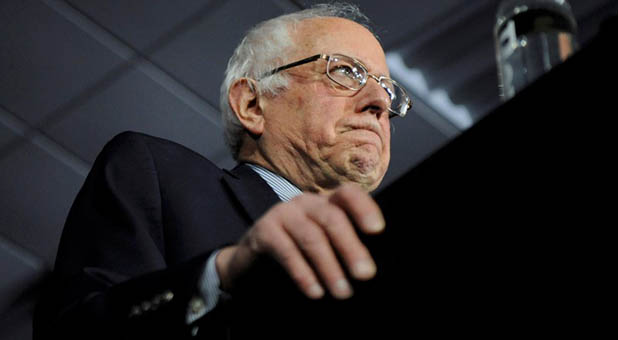College Student Blasts Bernie Sanders’ Free Tuition Plan
With the 2016 New Hampshire Democratic Primary just around the corner and scores of college-aged voters up for grabs, affordable public college education has become a key selling point for Bernie Sanders. The Sanders plan to “Make College Tuition-Free and Debt-Free” proposes offering free tuition at public colleges and universities, lowering interest rates on current and future student loans, meeting 100 percent of low-income students’ financial needs, and tripling the federal work-study program. As with most government handouts, the Sanders plan will likely cost more and deliver less than it promises.
Let’s start with the cost estimates for free public higher education. Virtually every advocate of free tuition references an article in The Atlantic from January 2014, which estimates the cost at roughly $62.6 billion. Sanders, factoring in his additional proposals, predicts closer to $75 billion. Two-thirds of his plan would be federally funded via new taxes on Wall Street speculators, with states contributing the remainder.
The problem with these calculations is that they are based on static projections for tuition costs. If this assumption proves faulty, the actual cost of implementing the Sanders plan will balloon. And there are three good reasons to expect an increase in tuition costs.
First, history suggests that tuition will continue to rise. Tuition rates have been gradually increasing over past decades, with students now paying 3.22 times more than in 1985. [See Figure 6, p. 18.] The Sanders plan will likely exasperate this trend because it will remove any incentive for public institutions to slow these increases.
Second, any reduction in current sources of revenue would likely require increases in tuition rates to cover the shortfall. For example, a large portion of public college budgets are governmentally funded through appropriations, grants, tax benefits, and work-study programs. In FY 2013, state aid and local taxes cumulatively contributed $78.8 billion to public higher education. Cuts to state or local budgets could result in less revenue for public colleges and universities, which would have to be offset by higher tuition rates.
Most public institutions also depend on revenue from hospitals, auxiliary enterprises, private gifts, investment income and other educational activities. These sources contributed $80 billion—or one-third of total revenue—to public institutions (four-year, two-year and less than two-year) in 2012. Although these programs are generally self-sustaining, the amount of revenue they generate is not guaranteed. Unexpected revenue deficits in these areas could also result in tuition hikes, costs ultimately saddled onto the taxpayer under the Sanders plan.
Third, the advent of free tuition will provide a powerful incentive for students to enroll in public colleges and universities. Whether motivating those who never before considered college to finally enroll, or incentivizing private college students to switch to the public sector, or a combination of both, the result will be the same—a significant increase in the cost of offering free tuition, well above estimates based on static enrollments in public institutions.
As faulty as Sanders’ cost estimates appear, perhaps the more troubling aspect of his plan is its false promise of eliminating student loan debt. The cost of college attendance includes far more than just tuition. In fact, fully half of public college students’ expenditures remains room and board. The College Board reports the average published tuition rate for public four-year in-state students as $9,410, while the corresponding price of room and board is $10,138. Textbooks are another significant cost of attendance, with the average public undergraduate student paying $1,200 annually.
Admittedly, many public institution students attend a community college or commute, which minimizes room and board costs but does not eliminate them entirely. If only tuition is covered by government, students will still require loans to pay for their textbooks, room and board, and many will remain weighed down with debt. While promising to provide a post-secondary panacea, Sanders merely increases government spending without lifting students’ financial burdens.
Before enacting a new federal entitlement, the American people deserve a more careful accounting of its costs. As currently written, the price tag of the Sanders plan is simply not as affordable as its proponents claim. College-aged voters would do well to look past the tirades against Wall Street speculators and demand more details—details such as exactly what services will be “free,” meticulous analysis of the plan’s financial assumptions, and specifics regarding how unexpected costs will be funded. They might be surprised to learn that the so-called free lunch they are being offered costs far more than suggested—and it doesn’t really taste that good, either.
Kyle Jorstad is a student at Grove City College studying political science with minors in Spanish and economics.







































